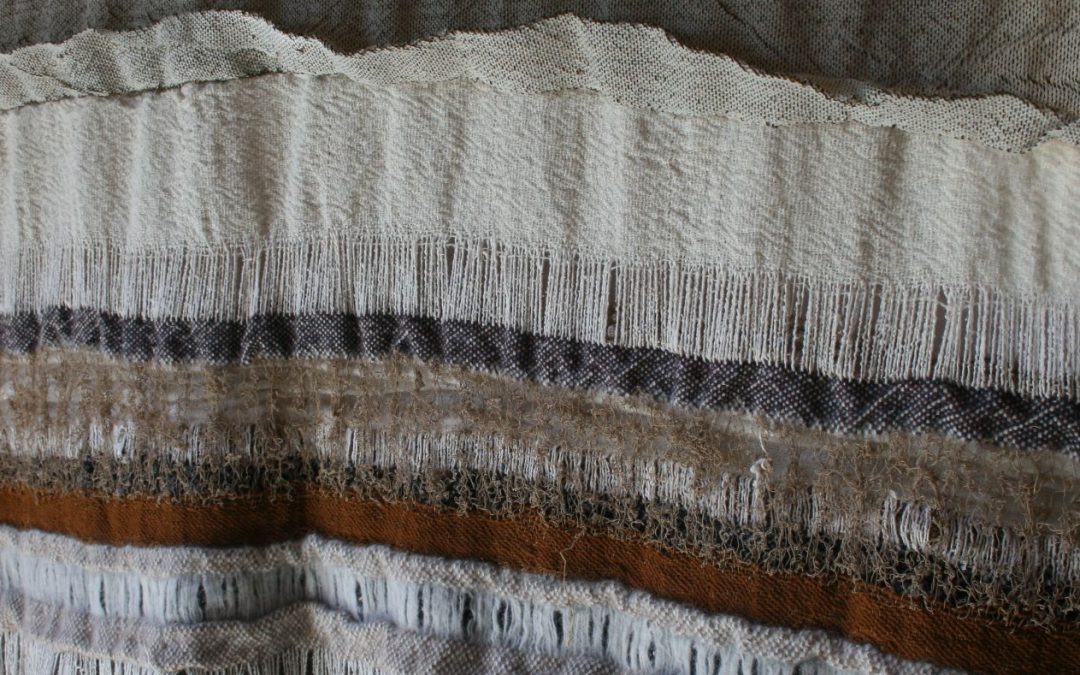The title of today’s blog is actually the title of a book I’ve been reading. It’s about jazz, but before you quickly skip on to the next item on your Facebook feed or scroll down to the next email in your inbox, it also applies to weaving. Written in 1988, Ted Gioia is reflecting on jazz and modern culture of the time and I found myself considering its relevance to weaving as well as to my previous life as a classically-trained musician. Gioia references philosophers, musicians, artists, critics, and authors as well as audiences in this book and it’s a very well rounded look at a distinctive musical approach that has led on to rap, among other things.
Anyway, the relevance to weaving, at least, to my way of thinking, is that, in preparing a loom and setting out to weave something, we are carrying out a preconceived plan. We need to know where we are thinking of going in order to set out in the right direction. But after we have got everything set up, the decision is then ours, to go directly to our destination like reading a musical score or following a set of instructions, or to wander around the byways, to take the little roads that we never noticed before or which suddenly became available to us. Even for weavers who want to follow the dots (an expression used for playing the piece as it is written), there is the personal expression of colour choices, of thickness of yarn, or of sett. But for those weavers who allow themselves to improvise ‘on the hoof’, like the jazz artist who plays a new set each night even though the pieces are essentially the same, but whose interpretation is spontaneous and ephemeral, there is the possibility of something original emerging, something very personal which has come from your soul.
Techniques are important – they are our vocabulary. Knowledge of structure is vital to ensure that the improvisation and exploration hangs together as a viable fabric, but allowing spontaneity to have its voice enables us to find ours. The ensuing fabric is our ‘recording’ of that exploration. Having structure gives a set of parameters around which to improvise. The band need to know the rough outline of chords so that the soloist can wander within the lanes and byways of the melody without it becoming a musical birds’ nest. The weaver needs to have the parameters of warp, threading, sett in order to have the boundaries to push and expand. The joy of pushing those boundaries, of exploring round that next bend in the road, that little shady path into the woods, the next sudden melodic shift that creates something extraordinary and changes perceptions, that’s what the improviser is after – the possibility of creating something amazing and unexpected is the driver.
It usually takes showing up day in day out for the magic to appear over time, for the changes in mental approach, for the shift in thinking that enables something interesting to emerge. This is the same for the weaver, the writer, the musician, the painter, the scientist. We have to do the leg work, gain the skills, deeply absorb the knowledge so that it becomes a subconscious part of us. Then suddenly, one day we have an idea and start to develop it. Sometimes that idea fizzles out and loses its appeal. But sometimes it continues to grow, morphing into a style, an exploration of techniques, a searching for further expression, pushing further and further, demanding more of us. It becomes us, it defines us, we have our voice and others can see it, hear it, read it, touch it. It can morph again, taking us down different paths, it can lead others to us for collaborations that become much greater than the sum of its parts, it can create opportunities that never would have been thought possible before. It has a life of its own.
Life is just the same. We may have a plan. But if we allow ourselves sometimes to explore the byways as well as taking the main road, we might just find our improvised life is even better than the one we had planned. We don’t know what we don’t know. Improvisation, exploring with intent, might, just might, lead us to see a world we never knew existed.

